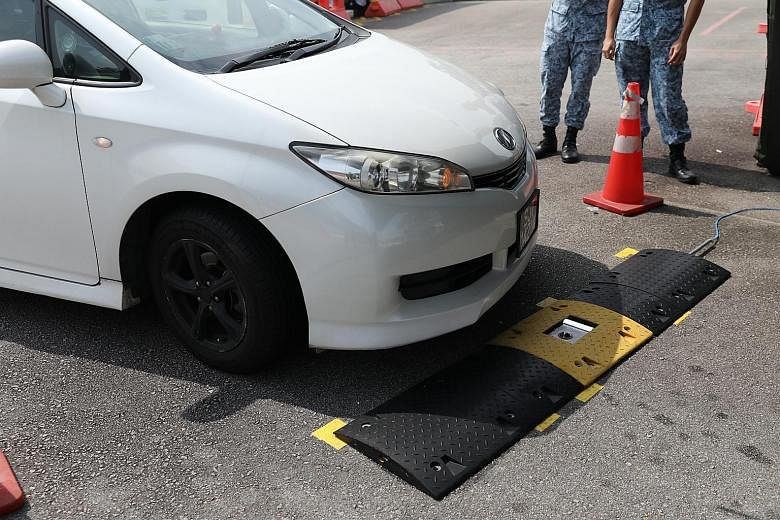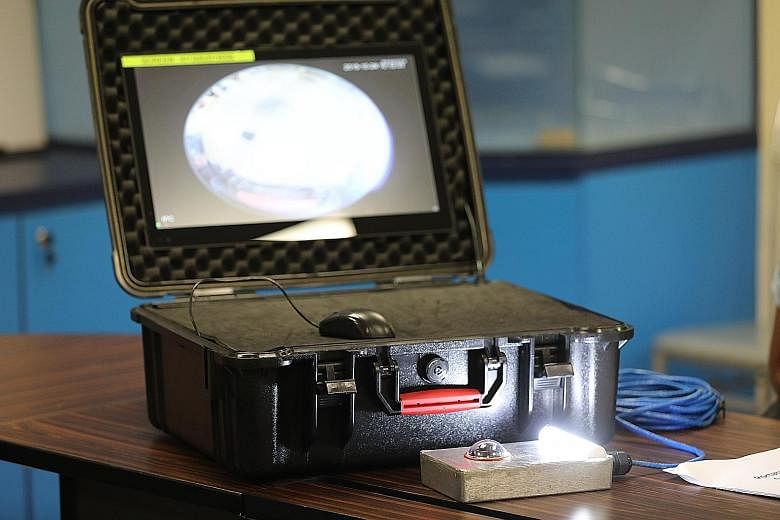A portable under-vehicle surveillance system by the Republic of Singapore Air Force (RSAF) that uses a camera with a fish-eye lens embedded in a speed bump has made checking vehicles faster and less prone to errors. It is one of the projects featured in the annual Innovation Symposium organised by the Ministry of Defence.
Known as the Portable Under-Vehicle Surveillance System, it also has a one-terabyte hard disk drive to store the footage.
Instead of using a mirror to check the undercarriage, which took about a minute for each vehicle and could mean certain blind spots were missed, a security trooper needs just 20 seconds to check for suspicious items with this.
The portable system complements the Under-Vehicle Surveillance System that is embedded into roads, especially when this permanent system is down.
Since July, the new system has been available at all RSAF bases and camps, including Tengah, Murai and Chong Pang camps.
Separately, a team from the navy designed an unmanned security and safety system to keep watch over ships that are docked in a shipyard for maintenance.
-
20
Number of seconds it takes to check a vehicle's undercarriage using the camera with a fish-eye lens, compared with a minute using a mirror.
Currently, this job is outsourced to a security company, which deploys guards for patrols and to control personnel access.
The proposed plan, which was tested on a frigate earlier this year, includes components such as closed-circuit television cameras stationed on board ships. Using video analytics, the system can help detect fires, smoke or flooding within 10 seconds. An unmanned checkpoint can confirm the identities of people heading into the shipyard and check for unauthorised metallic objects.
Project lead Military Expert 3 Cathsy Chue, 43, from the Ship Superintending Engineering Centre, said yesterday that the system can reduce the security clearing time for 100 shipyard workers and their bags from 30 minutes to six.
Lim Min Zhang



